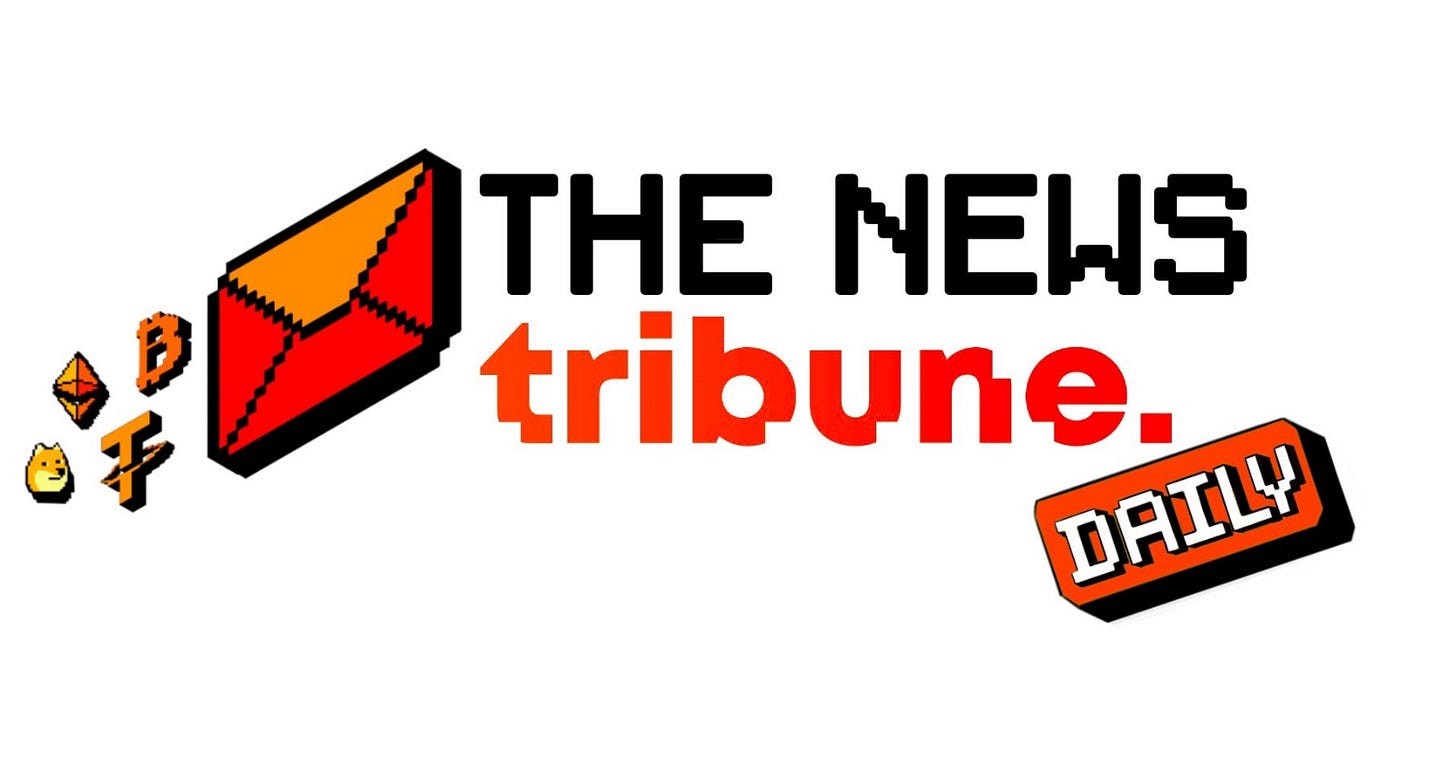Hello Cointribe! 🚀
Today is Thursday, June 26, 2025, and as every day from Tuesday to Saturday, we summarize the news from the last 24 hours that you should not miss!
But first…
✍️ Cartoon of the day:
A quick look at the market…
🌡️ Temperature:
⛈️ Stormy
24h crypto recap! ⏱
🏛️ Arizona creates a Bitcoin fund with seized assets
The state adopts HB 2324 law to establish a Bitcoin fund financed exclusively by crypto-assets from criminal convictions, without taxpayer recourse.
⚠️ BIS declares stablecoins dangerous for the global economy
The Bank for International Settlements judges stablecoins ineffective as currency, pointing out their lack of security, rigidity, and fraudulent use, and recommends a central bank digital currency.
📈 Strategy (Michael Saylor) close to joining the S&P 500
The company Strategy, owned by Michael Saylor, has a 91% chance of entering the S&P 500 index within five days if Bitcoin stays above $95,240.
💎 Ethereum ETFs surpass 4 billion $ in assets
Ethereum-backed ETFs reach $4.01 billion in assets under management, driven by BlackRock and Fidelity, despite a slight correction in ETH’s price.
📈 Build your crypto portfolio stress-free with Kraken's DCA method
DCA (dollar-cost averaging) consists of investing small regular amounts in crypto, reducing the impact of volatility and stress related to market timing. Kraken offers an automated recurring purchases service, allowing you to schedule daily, weekly, or monthly purchases on over 400 assets, including via SEPA transfer, card, or account balance.
This feature offers total flexibility: pause anytime, modify parameters or integrate triggers according to price, without excessive fees thanks to its deep liquidity. Kraken strengthens security with Proof-of-Reserves audits and a solid regulatory framework, providing a reliable platform for beginners as well as experienced investors.
The user interface simplifies onboarding, complemented by a DCA simulator that allows evaluating theoretical performance over past months. Kraken also offers educational content to guide users at every step of their investment strategy.
Crypto of the day: The Graph (GRT)
🧠 Technology & innovation
The Graph (GRT) is a decentralized protocol that allows efficiently indexing and querying blockchain data, a bit like a search engine for Web3.
Thanks to "subgraphs", developers can structure access to complex data (prices, DeFi histories, NFT activities, etc.) without overloading their applications.
Initially based on Ethereum, The Graph migrated to Arbitrum to improve scalability and reduce fees. It is now used by many major decentralized platforms (Uniswap, Aave, Synthetix…).
💰 Main utility & token advantages
The GRT token plays a key role in the ecosystem:
It is used to reward indexers, who ensure the execution and availability of queries.
It serves the curators, who signal high-quality subgraphs.
It allows end users to pay for data queries.
It grants access to governance rights on protocol developments.
GRT is also stakable, allowing to strengthen network security while generating rewards.
📊 Market data (as of June 26, 2025)
Current price: $0.0808 USD
24-hour change (CoinGecko): +0.90%
Market capitalization: ≈ $789 million USD
Rank on CoinMarketCap: #80
Circulating supply: ≈ 9.89 billion GRT
24-hour trading volume: ≈ $20.7 million USD
XRP free fall: 70% less network activity and record sales
The sharp collapse of activity on the XRP network feeds fears of a deeper reversal. While the crypto still recently resisted the market's bearish pressure, a set of indicators now suggests a worrying shift.
Network dynamics in disarray
The XRP network is undergoing a critical phase. Within a few days, on-chain activity dropped by 70%, a rarely seen signal with this intensity. This decline follows a +50% activity peak in early June, revealing extreme volatility in user engagement. This shift is not limited to volume decline, it is accompanied by a marked decrease in the number of transactions and token circulation. A turning point casting doubt on the resilience of the XRP ecosystem.
Mass withdrawals and whale pressure
The behavior of large holders sheds light on this crisis. Data reveals that these actors withdraw on average $68.8 million of XRP per day, signaling massive profit-taking. The SOPR indicator, which measures gains realized during transactions, collapses among holders who retained their tokens between three and six months. This suggests many investors are currently selling at loss or break-even.
A graphical element reinforces this bleak picture: the price structure adopts a descending triangle shape, typical of a bullish exhaustion. If this pattern confirms, a technical correction towards $1.30–$1.60 could materialize, reinforcing the ongoing bearish cycle.
A rereading of previous XRP drops
The ongoing decline sequence recalls painful pasts of XRP. After its historic peak in 2017, the crypto had a prolonged multi-year drop. The current pattern, with a rollback of network fundamentals and cascading profit-taking, could well herald a similar scenario. The inertia effect of a market losing momentum is often underestimated, especially in a macroeconomic context where capital flows reorient quickly.
Added to this is the regulatory factor, omnipresent in the XRP universe, whose conflicted relationship with the SEC continues to feed chronic uncertainty.
XRP, historically cyclical, could still surprise, but current signals call for caution.










